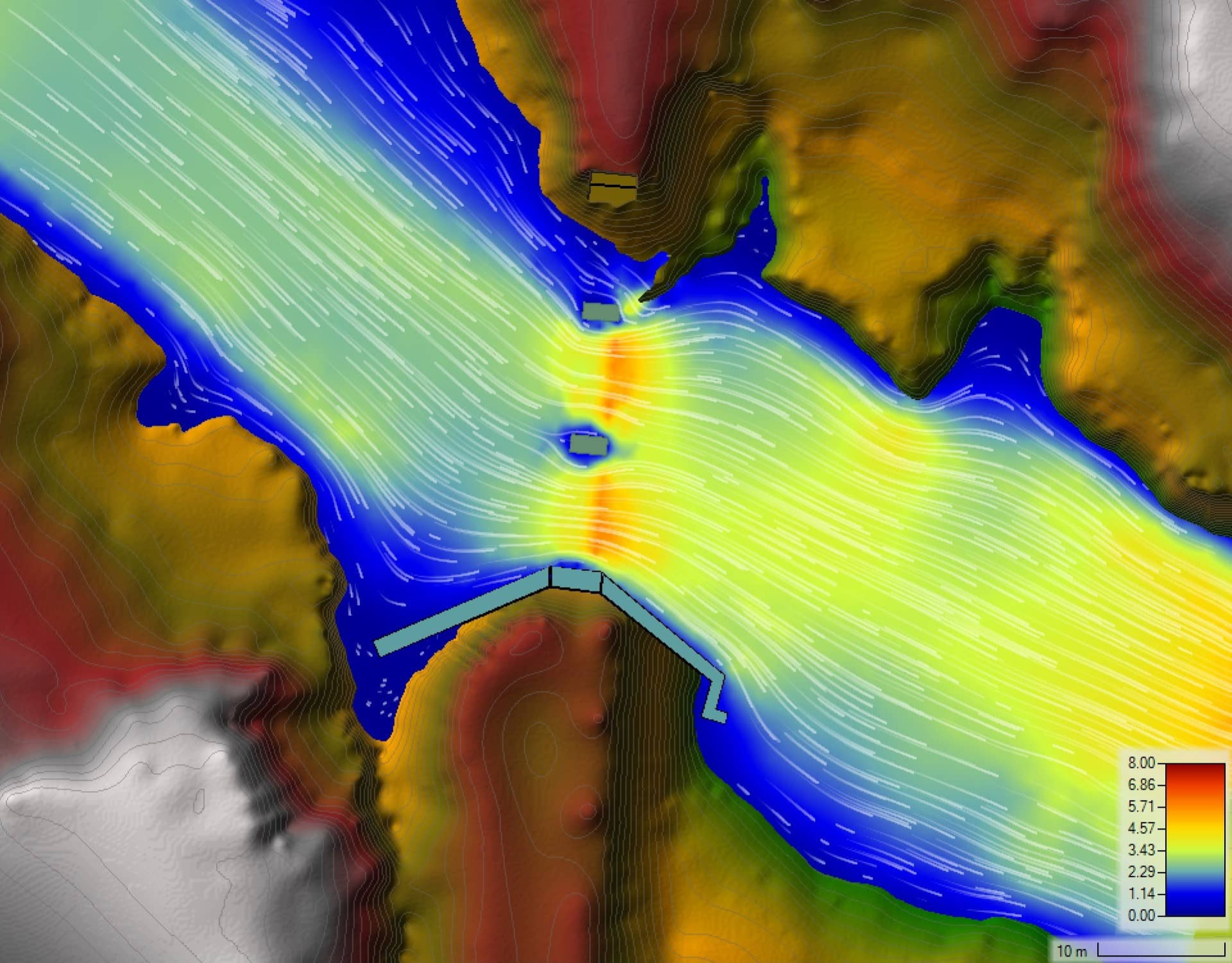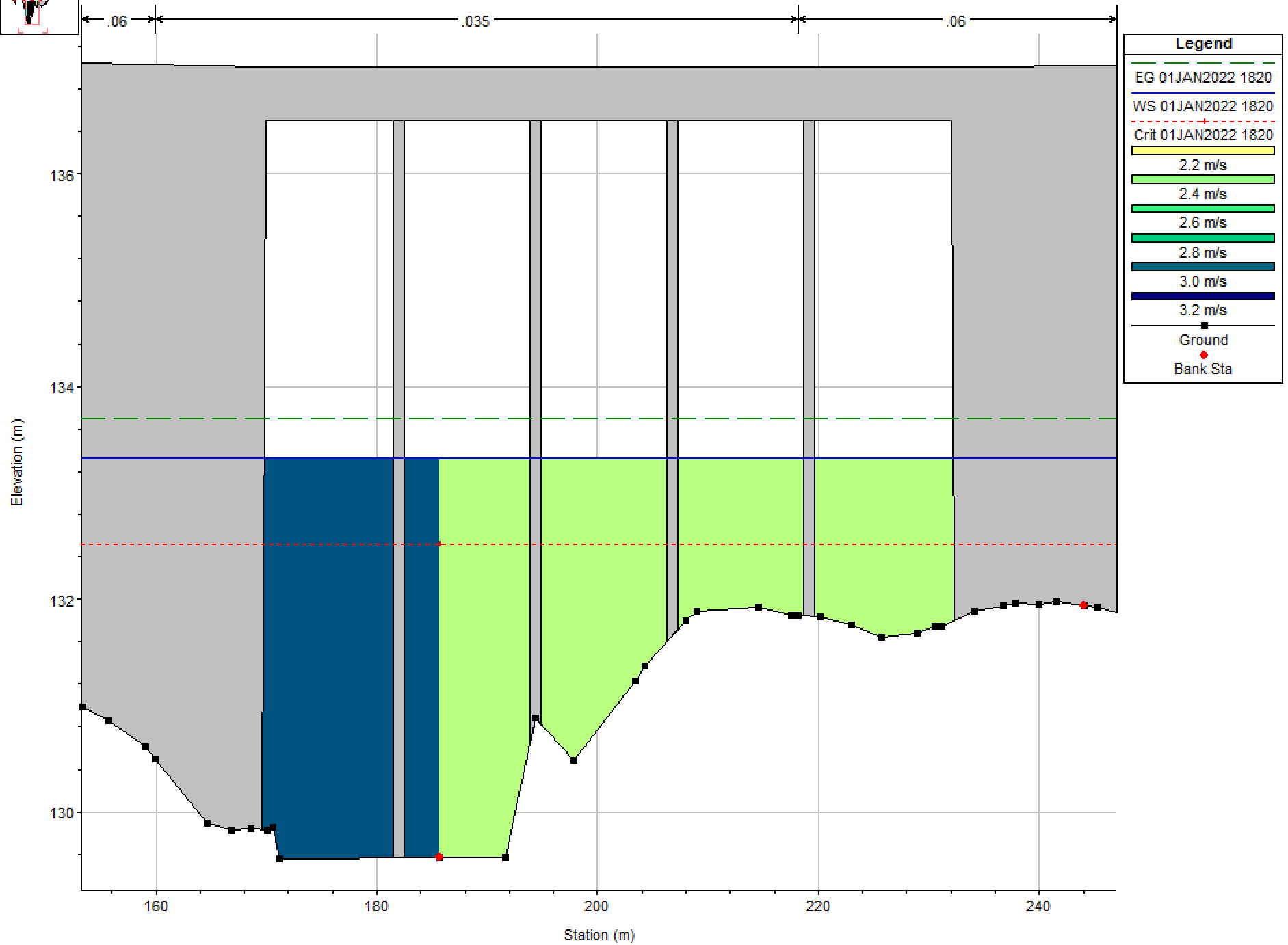
Roads and railways drainage










Hydraulic study of bridges
Bridge hydraulic modeling is an essential practice in the design and evaluation of structures to ensure safety and adequate performance under varying hydraulic conditions. This process involves the use of computer models to simulate the behavior of water around and under bridges, considering factors such as river flow, water levels, bridge geometry and riverbed characteristics.
Hydraulic modeling makes it possible to assess the impact of extreme hydraulic conditions, such as floods, on the structural integrity of bridges. Additionally, it helps determine the ability of water to pass under the bridge without causing erosion or instability in the riverbed.
Detailed analysis of these factors contributes to the design of more resilient and efficient bridges. By simulating hydraulic behavior, we can optimize the geometry of bridges, adjusting details such as span height and width to minimize adverse hydraulic impacts. Furthermore, hydraulic modeling allows you to anticipate potential problems, such as the formation of vortices or debris obstructions, and implement appropriate mitigation measures.
Culverts design
The hydraulic design of culverts under roads and railways is a fundamental practice in the planning and design of road infrastructures. These passages, which can have different configurations, play a crucial role in managing the flow of water under the roads, directly influencing the safety of users.
The importance of hydraulic design lies in the ability of these structures to efficiently deal with water runoff, especially during extreme weather events, such as intense rains and floods. Undersized structures can result in flooding, soil erosion and compromising the integrity of roads and railways, putting user safety at risk.
When carrying out hydraulic design, factors such as the maximum expected flow, the hydraulic characteristics of the site, the topography and the typical climatic conditions of the region are taken into account. Careful analysis of these elements makes it possible to design hydraulic culverts that guarantee the free circulation of water, avoiding accumulations that could jeopardize the stability of the road.
Furthermore, adequate sizing contributes to the durability of road structures, minimizing erosion around passages and preserving soil stability. In this way, hydraulic crossings play a crucial role in the safety of road and railway users, ensuring the effective functioning of these routes even in challenging hydraulic conditions.
